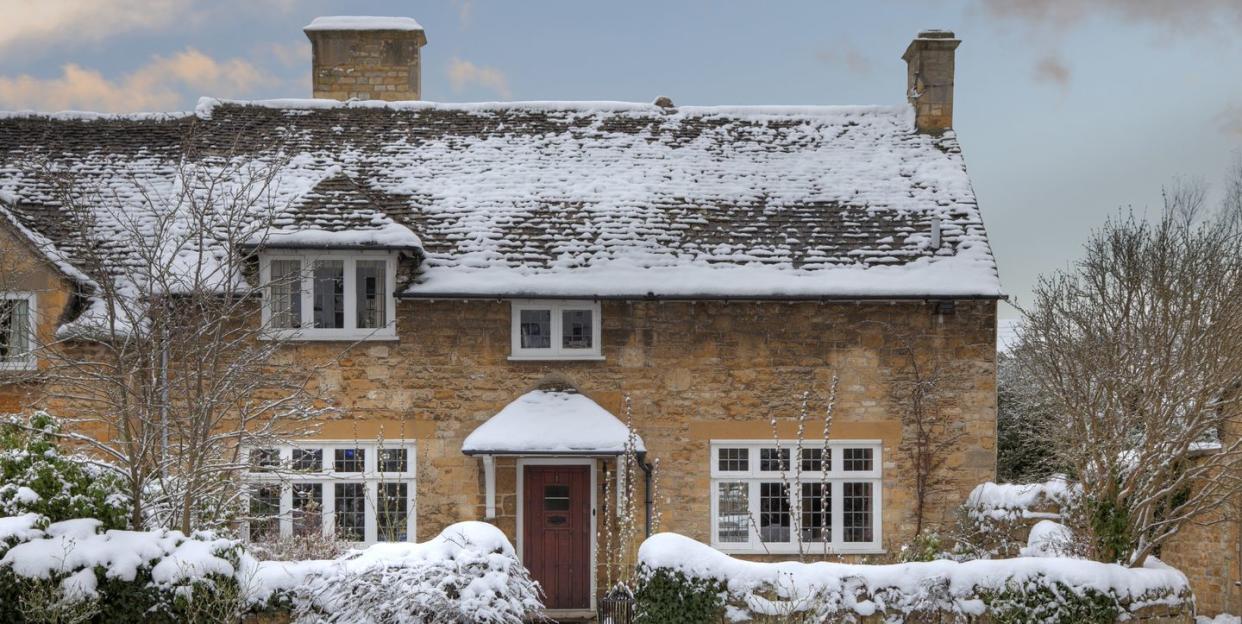10 ways to winter-proof your home

Now autumn is finally here and temperatures have dropped, we're all worrying about one thing: when to put the heating on.
With energy prices increasing by more than 2.5 times since last year, people will be looking for other options to delay turning the thermostat up.
The government's energy price guarantee, which came into effect on 1st October, means annual energy bills for most UK households will be around £2,500.
However, this figure is not a maximum cap on your bill. Instead, it is the price you pay per kilowatt, meaning if you use a lot more energy, your bill will be higher than that figure.
With that in mind, now is the time to get ready and prepped for winter. We've listed some jobs to do now to help keep heat in your home and reduce your energy bills.
1. Get rid of draughts
An oldie, but a goodie – draught excluders do as they say and keep out the chilly winds, especially if you live in an old house. If you don't want to buy something new, blankets rolled into sausage shapes work just as well. You can also draw the curtains, or better yet, seal any gaps in your window frames or doors to prevent drafts coming in.
2. Clean your gutters
Leaves, twigs, moss and other debris can lead to blocked gutters, which may incur damp in your home if water runs down the exterior wall instead of through the pipe. It can also cause flooding or leaks. Check there's no overhanging branches nearby that could end up clogging up the gutters in the near future, too.
3. Check your boiler
Even if you're delaying turning on the heating, or setting it to a timer, it's a good idea to turn it on once a week for general maintenance.
You don't want to get to a very cold spell only to realise it doesn't work. Turning the heating on for just 15 minutes a week will keep it ticking along, but during winter's depths, an hour a day is advisable.
The boiler will also need a pressure check, too. British Gas says the pressure should be around 1-1.5 bar. This should be visible at the front of your boiler. Lastly, you should also aim to have the boiler serviced once a year too, ideally before winter arrives.
4. Bleed your radiators
This should be done twice a year in order for your radiators to be as efficient as they can be. Bleeding them will get rid of any air pockets that may have formed in the pipes, which can put strain on the boiler to thoroughly heat the radiators. The easiest way to check this is to feel if the radiators are cool at the top, and hot at the bottom.
You can bleed them yourself – all you need is a radiator bleed key (available at hardware shops) and something to soak up any water that may leak out. A washing up bowl and some tea towels are fine.
5. Insulate your pipes
This is a really easy way to prevent heat escaping from the hot water travelling through your pipes. It can also stop pipes from potentially freezing if temperatures drop. You can buy insulating tubing from most DIY shops.
6. Check your insulation
If you're in a rented home, this is much harder to install or update, but you can of course speak to your landlord if the property you are renting has poor insulation. As many UK homes are old, these buildings can have little to no insulation at all, so heat easily escapes. This means these homes use more energy to heat them than they should need.
If you are able to insulate your home, the easiest place to do this is in the loft. This sort of insulation should last around four decades, and estimated costs sit between £285 and £395 to install. If you're confident, this can be done yourself, otherwise you can book a professional.
7. Check your roof
One of the first signs of a potential leak in your roof is a broken or slipped roof tile. Often these can be seen by just walking around the house, or if you're confident in doing so, you can go up a ladder for a better inspection. You can enlist the help of a professional though, if you're not happy scaling it yourself.
8. Find where your stopcock is
If you don't know where this is in your home, now is the time to find it. It looks like a garden tap, or it could be a lever, and is usually found under your sink. A stopcock completely turns off the water supply, so if there's flooding or the pipes have frozen, you need to turn it off to prevent pressure building up which may lead to a burst pipe.
9. Check your chimney
If you have a working fire in your home, or even if your chimney is sealed, it needs to be maintained. Water can get trapped in it after heavy rain or snow, which can lead to water damage and even leaks. Check that the pointing is in good condition and will last the coming winter.
10. Consider a smart thermostat
Installing a smart thermostat can help regulate the temperature in your home, and keep it at a pleasant, constant heat. This means once it's become warm, it can lower the temperature so it isn't blasting out hot air for hours, only for you to get too hot, and be sitting in a T-shirt mid-winter.
You Might Also Like

 Yahoo Movies
Yahoo Movies 
